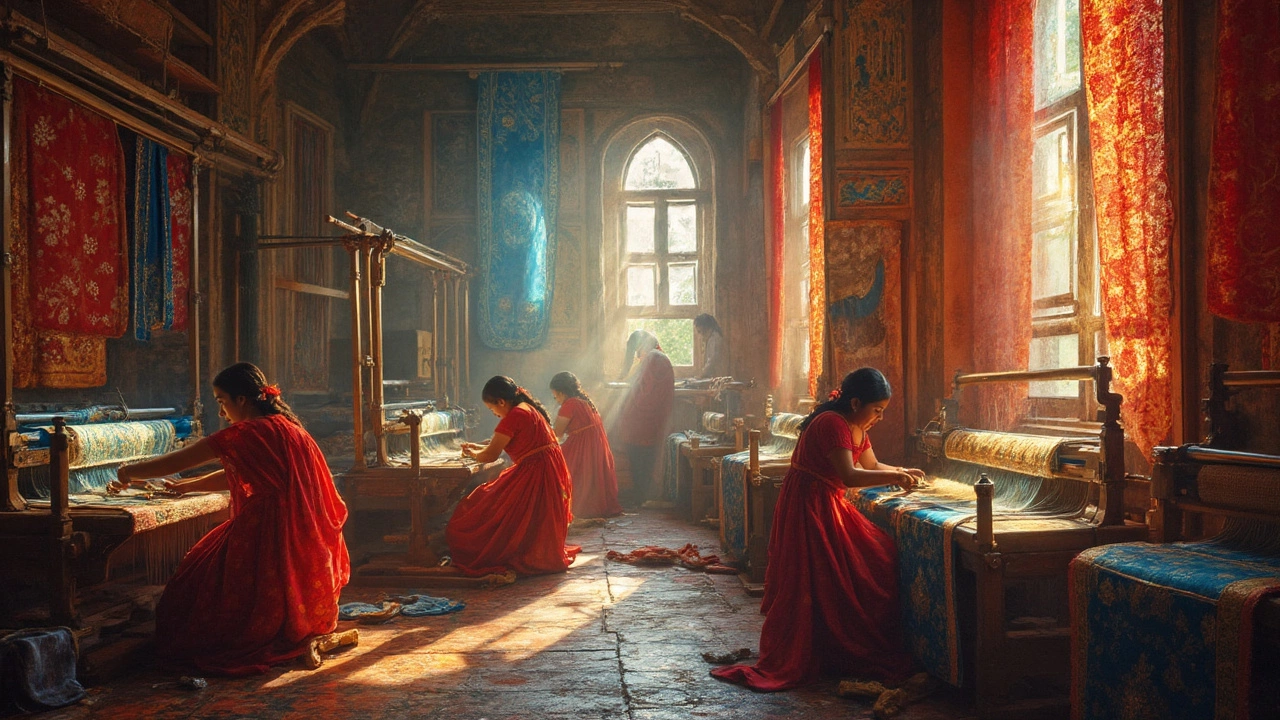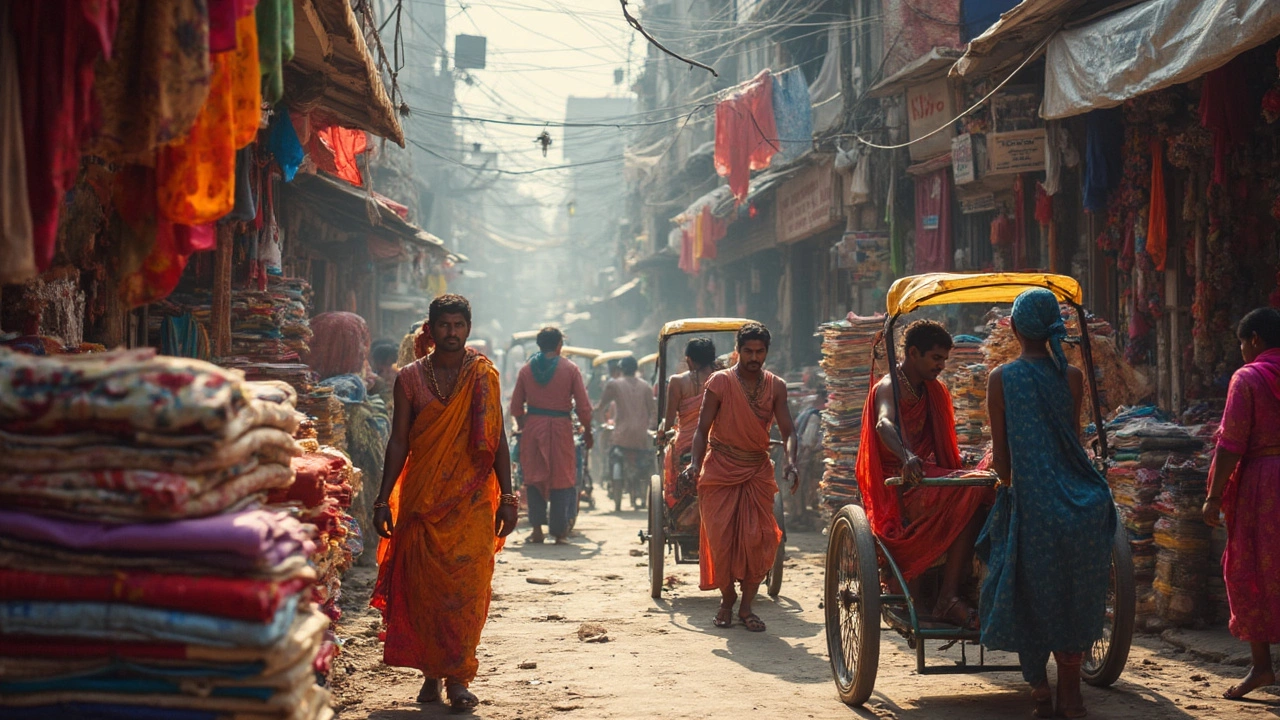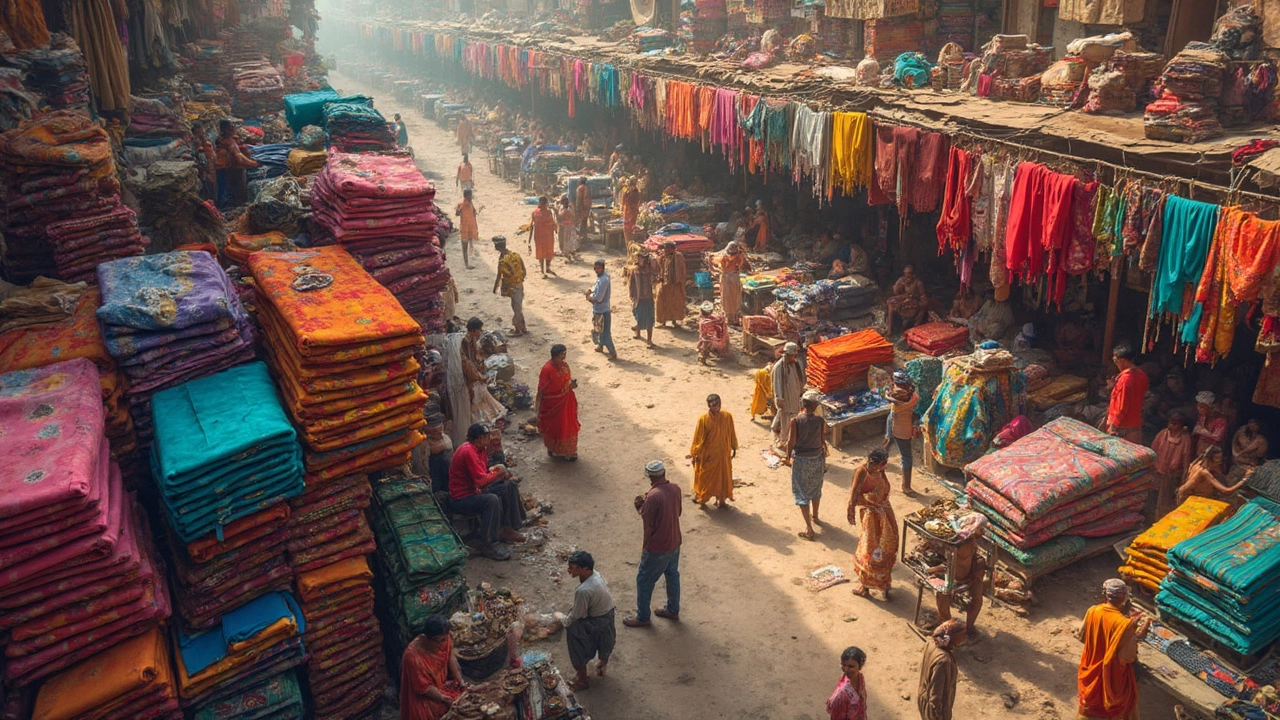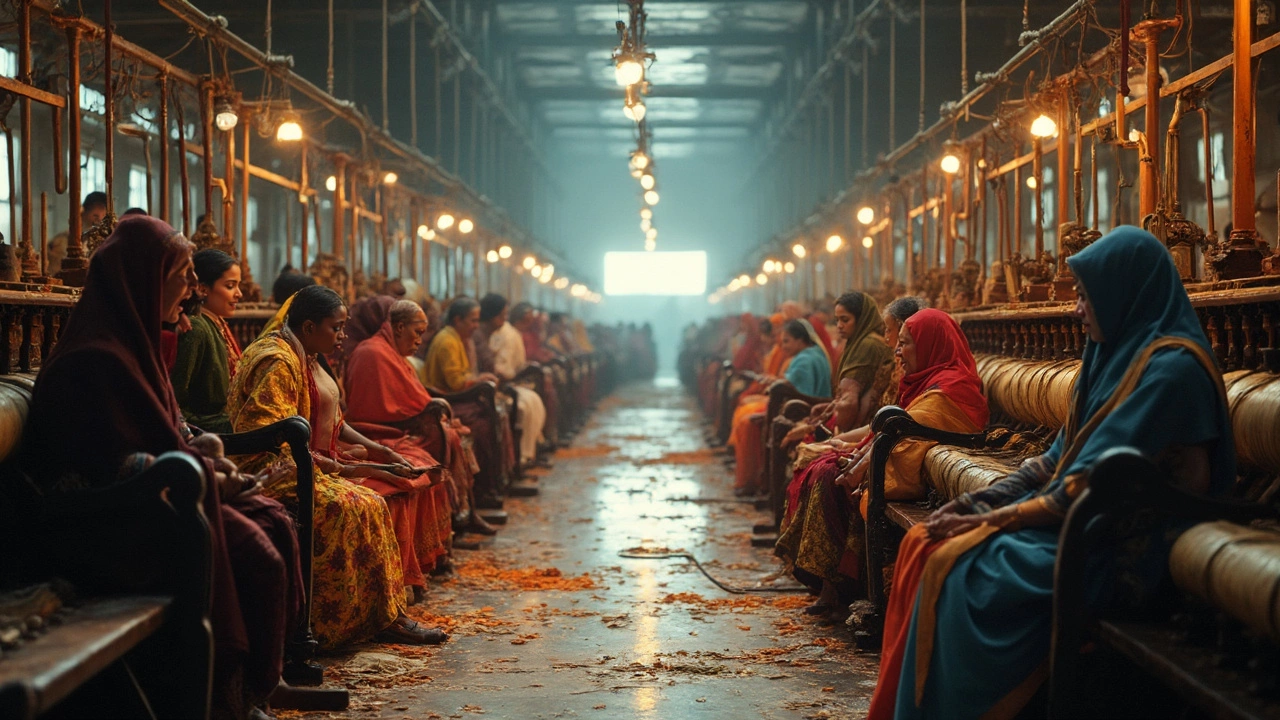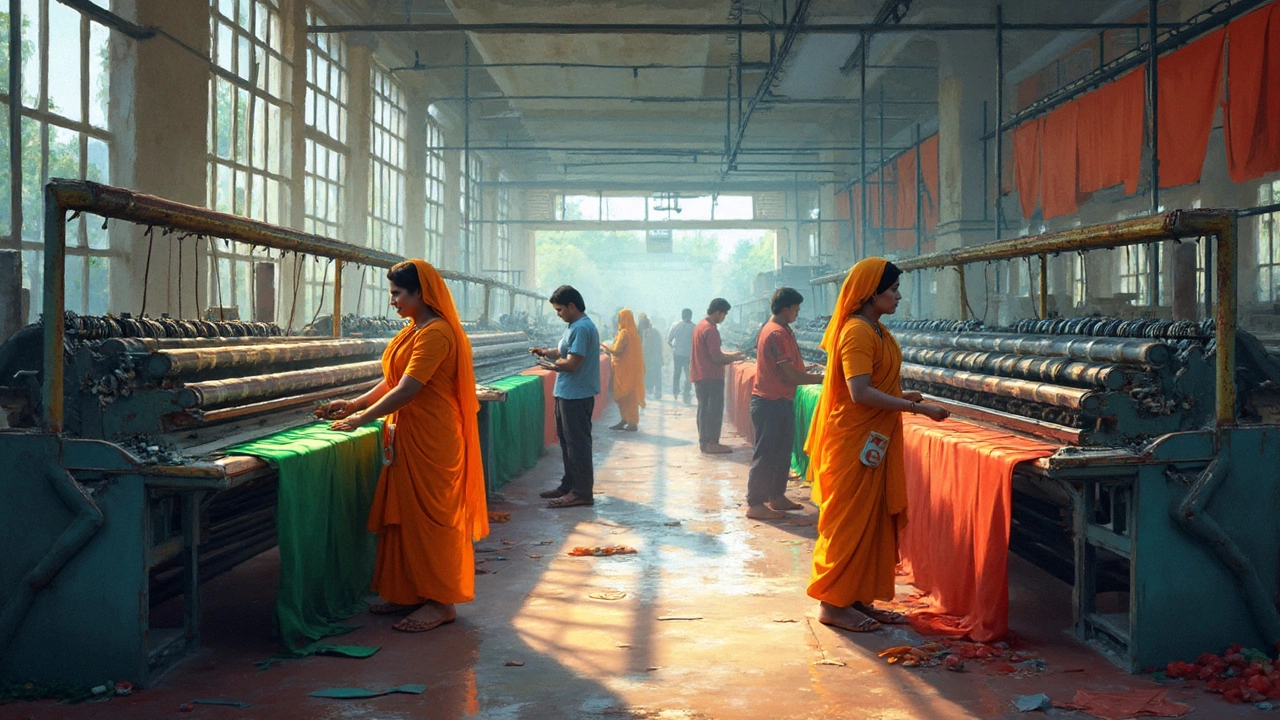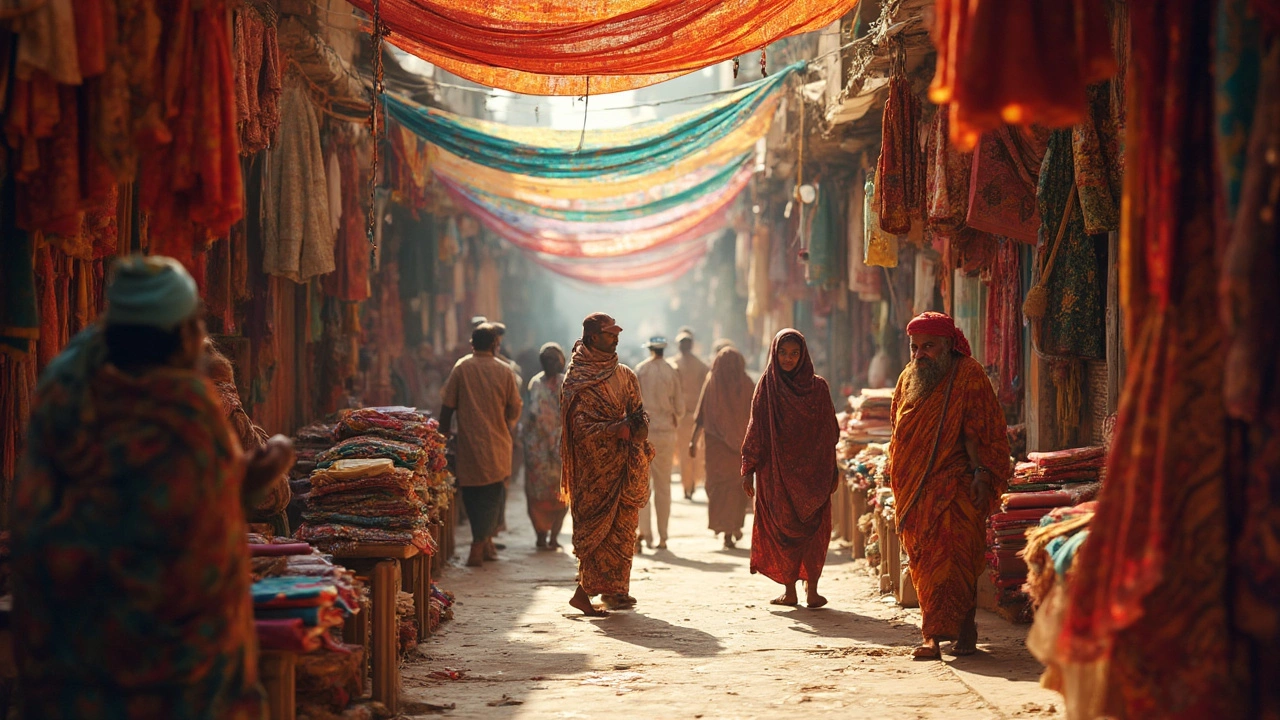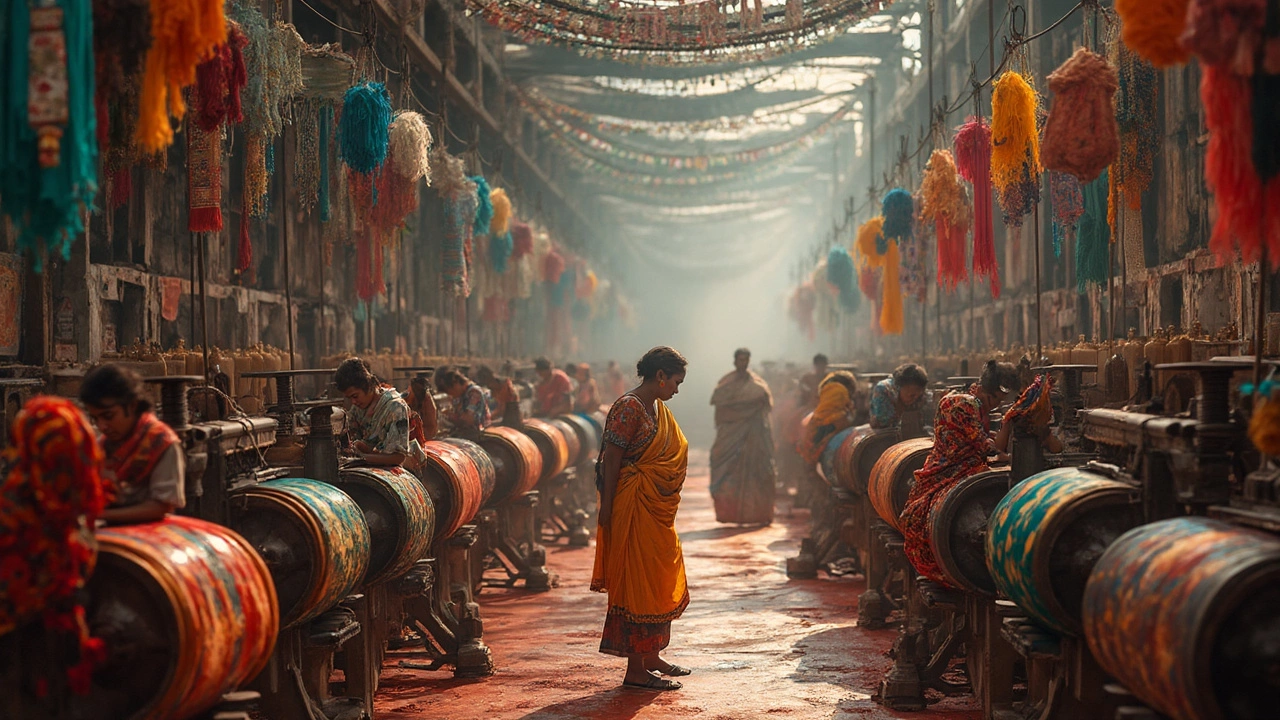- Is AbbVie owned by Abbott? - Unraveling the corporate link between two pharma giants Oct 20, 2025
- Top 2 Manufacturing Businesses to Watch in 2025 Oct 18, 2025
- What Is India's New Textile Policy? Key Changes and How It Affects Manufacturers Nov 18, 2025
- Number One Selling Item in Manufacturing: Insights and Ideas Nov 28, 2024
- Which Country Leads the Electronics Industry? A 2025 Comparative Guide Oct 9, 2025
Textile Manufacturers India – Leading Companies, Trends & Tips
India’s textile sector fuels millions of jobs and powers a big chunk of the country’s exports. If you’re looking for reliable partners, better prices, or the latest tech, the right manufacturer can make all the difference. Below you’ll find quick facts, practical advice, and a snapshot of what’s shaping the industry today.
Why India Leads the Textile World
Raw cotton grows abundantly across Gujarat, Maharashtra and Punjab, giving manufacturers a steady feedstock. Combine that with a skilled workforce that can handle everything from handloom to high‑speed finishing, and you have a natural advantage. Government schemes like the Production‑Linked Incentive (PLI) and easy customs for export‑bound yarn also keep costs low and cash flow healthy.
How to Pick the Right Textile Manufacturer
Start with capacity: can the mill handle your order size without compromising lead time? Ask for past performance data – on‑time delivery rates and defect percentages tell you a lot. Next, check certifications such as ISO 9001 or Oeko‑Tex; they signal a commitment to quality and sustainability. Finally, visit the facility if you can. Seeing the production floor helps you gauge everything from equipment age to worker safety.
Pricing matters, but the cheapest quote isn’t always the best deal. Look for transparent cost breakdowns – yarn, dye, labor, and overhead. Hidden fees pop up later if you aren’t careful. A good manufacturer will explain each line item and show you where you can save, like bulk yarn purchases or energy‑efficient machines.
Technology is another game‑changer. Today’s top mills use computer‑controlled looms, automated quality checks, and water‑recycling systems. These investments cut waste, speed up turnaround, and often lead to better fabric consistency. Ask potential partners about their tech stack and how it benefits your product.
Sustainability isn’t a buzzword anymore; it’s a buying requirement for many brands. Factories that recycle water, use low‑impact dyes, and certify carbon footprints attract premium clients. If eco‑friendly sourcing is on your roadmap, shortlist manufacturers with clear sustainability reports.
Location influences logistics and lead times. The textile corridors of Surat, Tirupur, and Bhiwandi host clusters of specialized mills. Choosing a partner near your target market reduces freight costs and eases customs clearance for exports.
Communication is the glue that holds the relationship together. A responsive point of contact, clear reporting, and a willingness to adjust plans show professionalism. Test this early – a quick email reply or a detailed sample quote can reveal how easy it will be to work together long term.
Finally, consider after‑sales support. Does the mill offer fabric testing, repair services, or assistance with design tweaks? Manufacturers that stand by their product help you avoid costly returns and keep customers happy.
By weighing capacity, certifications, technology, sustainability, location, communication, and support, you can narrow down the hundreds of Indian textile manufacturers to the few that truly match your needs. Ready to start the search? Use these criteria as a checklist and you’ll save time, money, and headaches down the road.
Expensive Fabrics in India: What Makes Them Costly?
- Aarav Sekhar
- Jun 8, 2025
Which fabrics top the price charts in India, and why do they cost so much? This article breaks down the most expensive textiles, highlighting what sets them apart. You'll learn what drives the price—whether it's rare materials, skilled craftsmanship, or tradition. Discover which regions in India are hotspots for luxury fabric making. Get practical tips if you're thinking of buying or investing in high-end cloth.
Textile Capital of India: Where the Fabric Magic Happens
- Aarav Sekhar
- May 27, 2025
Trying to find the main hub of the Indian textile world? This article digs into which city owns the title of 'textile capital of India' and why. You'll discover how it gained this fame, what makes its textiles stand out, and what the actual working life looks like there. We’ll also show you where the real manufacturing action happens and give you tips if you’re looking to connect with suppliers or start your own textile journey. Concrete info, no fluff—just what you need to know about India’s textile powerhouse.
Largest Textile City in India: Why Surat Tops the List
- Aarav Sekhar
- May 4, 2025
Curious about where India’s textile magic happens? This article digs into the unmatched scale and buzz of Surat—the country’s biggest textile city. Discover why Surat has become the go-to hub for manufacturers, exporters, and buyers alike. Learn how technology, innovation, and community power up this industry. Get some practical tips if you want to source fabric or launch a textile business in Surat.
Indian Textile Industry Collapse: What Really Happened and What It Means for Manufacturers
- Aarav Sekhar
- Apr 23, 2025
The Indian textile industry, once a global powerhouse, has seen a dramatic downturn in recent years. The decline wasn't caused by one thing, but a perfect storm of rising costs, outdated technology, and tough competition from abroad. Job losses hit millions, and many small manufacturers struggled to survive. This article breaks down exactly why the industry collapsed, who got hurt, and what can be done to turn things around. If you’re in textiles or just curious about big shifts in global manufacturing, you’ll find facts and practical tips here.
Who is the King of Textiles?
- Aarav Sekhar
- Apr 16, 2025
Uncover the dynamic world of India's textile industry, where historical roots meet modern innovation. Explore major players shaping the sector and discover why India holds a pivotal role in global textile production. With insights into the balance between tradition and technology, this article offers a detailed look at the factors that place these manufacturers in a league of their own.
Exploring India's Textile Hub: Unveiling the World Capital
- Aarav Sekhar
- Mar 26, 2025
Discover why India is often hailed as the textile capital of the world. This exploration dives into the historical significance, modern advancements, and economic impact of India's flourishing textile industry. With insights on major manufacturing hubs like Surat and Tiruppur, the piece also highlights challenges and forward-looking trends in sustainable practices. Whether you're an industry insider or a curious reader, this article sheds light on India's vital role in the global textile landscape.
How Many Textile Manufacturing Companies Are There in India?
- Aarav Sekhar
- Feb 25, 2025
India's textile manufacturing scene is massive, with thousands of companies scattered across the country. This article dives into the details, examining how these companies contribute to the economy, which regions are the most textile-centric, and what this means for both local and global markets. With a rich history and bright future, India's textile industry is a cornerstone of its economic landscape, providing invaluable employment opportunities and leading innovation. Whether you're a textile enthusiast or just curious, this piece offers an insightful look into a vital sector.
